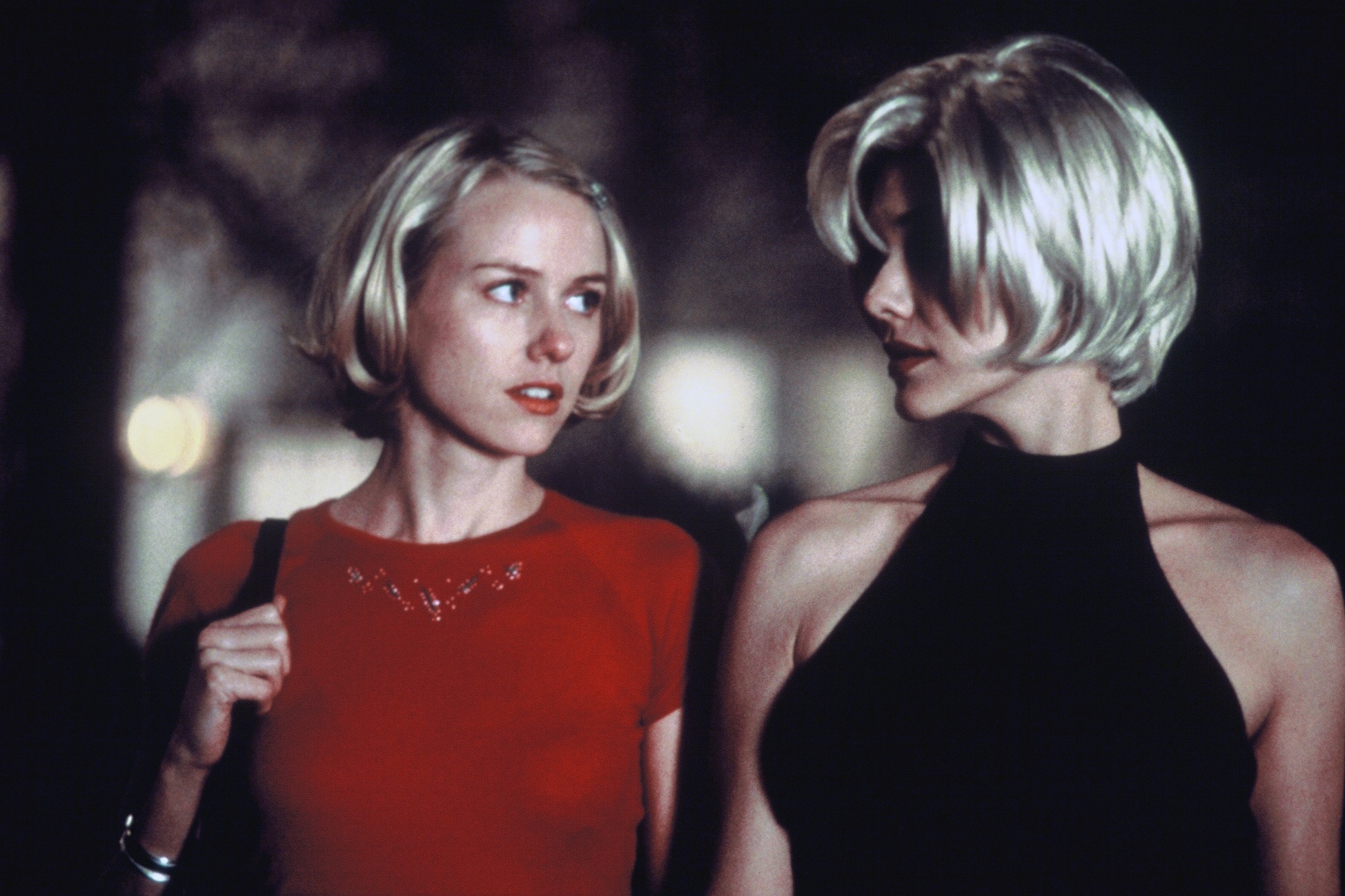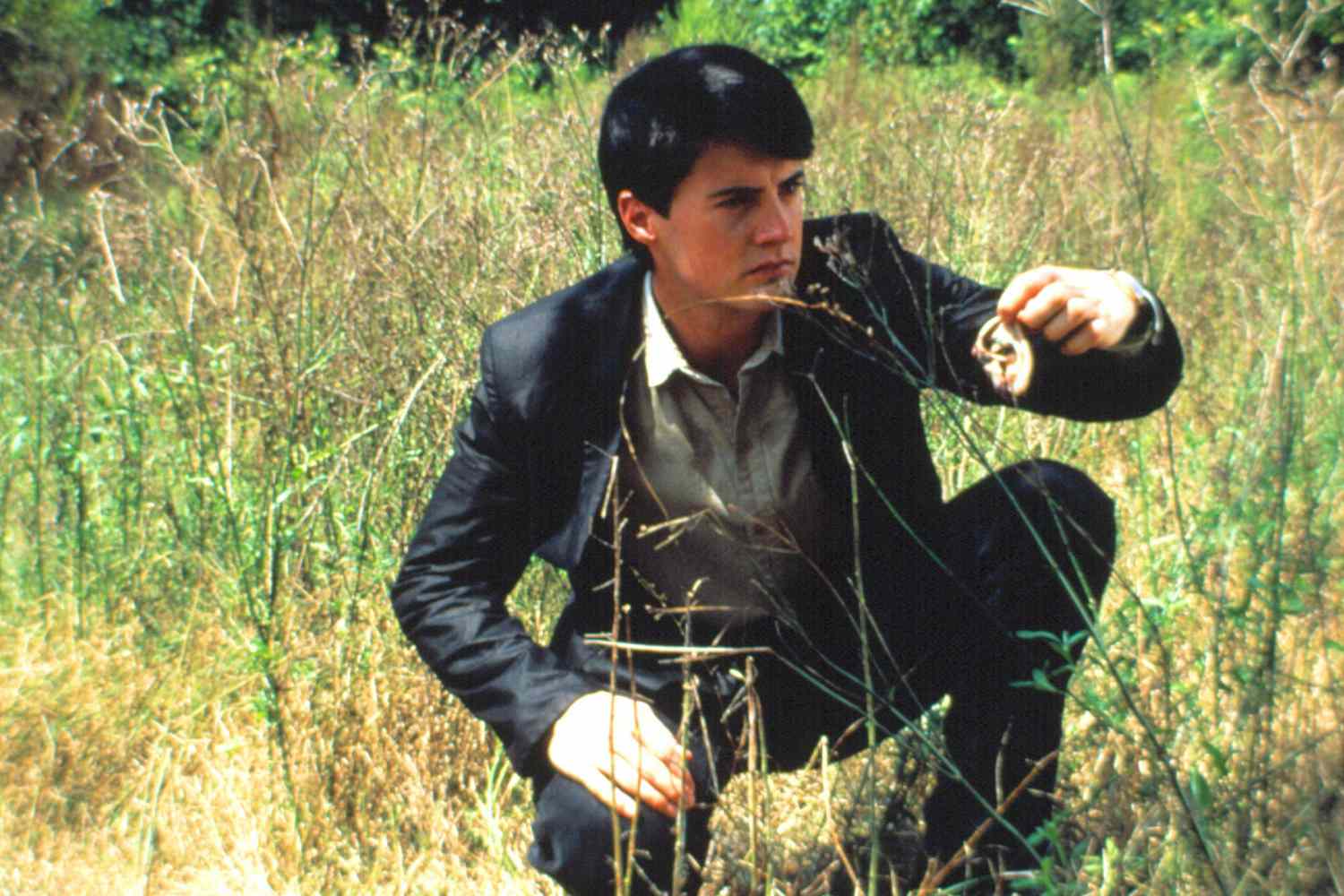David Lynch’s final two features mapped a haunted Hollywood of curdled innocence and back-alley eeriness. Mulholland Drive (2001) seemed the ultimate LA noir, till Inland Empire (2006) dug into deepest Lynch. The eighteen fallow big-screen years preceding his death this week show the loneliness of his vision in his medium’s conformist capital, which he nevertheless adored. “It’s kind of a trick in the light [that] is magical,” he said of his adopted hometown’s allure. “It gives you the indication that anything is possible. It’s critical for me to feel that light.”
Mulholland Drive’s opening minutes follow classic Ava Gardner-esque brunette Rita (Laura Harring)’s descent from the titular address, a country-dark elite eyrie which Lynch called a “dream road”, through Sunset Boulevard’s dawn-misted palms to the borrowed bungalow of struggling, apple-pie-innocent actress Betty (Naomi Watts). The simmering erotic charge between the two women helped keep audiences on board as a superficially threadbare tale of struggling hopefuls in the city of dreams plunged into the director’s true domain of subconscious nightmare logic, murder and magic, an eldritch spell cast with smoke and mirror editing which keeps sight of cinema stardust. Inland Empire then saw Lynch cut himself adrift from conventional distribution and narrative coherence for a low-def digital cut-up, pursuing Laura Dern’s starlet down jarring dead ends and static-slashed fractures which gradually assume their own solidity, abandoning mainstream reality for the underground.
 “It’s no longer your film,” Justin Theroux’s director is informed by a Mob-like corporate board in Mulholland Drive, and its feat of structural legerdemain was Lynch’s repurposing of his rejected pilot for a Mulholland Drive TV series, which itself grew out of a mooted Twin Peaks spin-off following the further adventures of Audrey Horne (Sherilyn Fenn) in Hollywood.
“It’s no longer your film,” Justin Theroux’s director is informed by a Mob-like corporate board in Mulholland Drive, and its feat of structural legerdemain was Lynch’s repurposing of his rejected pilot for a Mulholland Drive TV series, which itself grew out of a mooted Twin Peaks spin-off following the further adventures of Audrey Horne (Sherilyn Fenn) in Hollywood.
Lynch seemed to try a conventional, setback-strewn career path at first, from midnight movie renown with the monochrome grotesquerie and boneyard soundtrack of Eraserhead (1977) to its humane, mainstream extrapolation in the period freakshow travails of The Elephant Man (1980), then the sf epic Dune (1984), meant to rival Star Wars after Lynch turned down Return of the Jedi and rich with deeply conceived, baroque detail, but a wounding box-office bomb. Blue Velvet (1986) asserted Lynchian verities, with its severed ear found rotting in a suburban Eden, and Sixties counter-culture revenant Dennis Hopper turning his psyche deepest black as sadist Frank Booth. “Why are there people like Frank in the world?” Sandy (Laura Dern) asks Jeffrey (Kyle MacLachlan), in Lynch’s faux-naive, Fifties tone, though Jeffrey has already joined Frank’s violent voyeurism. The film’s perversion of both film noir and a form of Reaganite, Peyton Place innocence was decried by many US critics as sick, but felt fiercely fresh and intense, leading the charge of indie peers such as the Coens, and carving its new generation’s heart of darkness.
 Wild At Heart (1990) showed Lynch’s closeness to Tarantino’s far more popular talent, prefiguring the latter’s True Romance with its savagely violent lovers on the run and ironic pop-culture artifice, as Nic Cage struts in his Elvis snakeskin jacket. A slick and crude disappointment after Blue Velvet despite its Palme d’Or win, it has lost favour next to Lynch’s gnomically extreme later work and Tarantino’s perfecting of its formula. The blackly comic aftermath of a botched hit in Mulholland Drive could also have strayed from Pulp Fiction (1994), so too Blue Velvet’s resonant repurposing of Roy Orbison’s music, but the harsher edge and narrow hinterland of Tarantino’s cinephilia rarely catches Lynch’s heady strangeness.
Wild At Heart (1990) showed Lynch’s closeness to Tarantino’s far more popular talent, prefiguring the latter’s True Romance with its savagely violent lovers on the run and ironic pop-culture artifice, as Nic Cage struts in his Elvis snakeskin jacket. A slick and crude disappointment after Blue Velvet despite its Palme d’Or win, it has lost favour next to Lynch’s gnomically extreme later work and Tarantino’s perfecting of its formula. The blackly comic aftermath of a botched hit in Mulholland Drive could also have strayed from Pulp Fiction (1994), so too Blue Velvet’s resonant repurposing of Roy Orbison’s music, but the harsher edge and narrow hinterland of Tarantino’s cinephilia rarely catches Lynch’s heady strangeness.
The Straight Story (1999), an absurd, charming yarn in which Oscar-nominated Richard Farnsworth determines to attend his ailing, estranged brother by traversing the Midwest on his tractor, showed Lynch could handle truly benign Americana. His only large US success, the first series set in the cherry-pie-eccentric smalltown of Twin Peaks (1990), hooked a network audience on the soapy, at first unanswered mystery of who killed Laura Palmer. Its second series and feature prequel Twin Peaks: Fire Walk With Me (1992), though, characteristically magnified mystery, incest and evil, and the sense of a puzzle not meant to be solved.
Lynch rewired wider sensibilities beyond his initial cult reach, offering mazey, coded disquiet like Kubrick squared, while attuned to and enthralled by cinema’s unreal potential. “If you appreciate slipping into another world, like a dream,” he said, preparing audiences for Mulholland Drive, “and if you can withhold many intellectual judgements, and just float with the world [as it talks] to you, you could have a very interesting experience.”
Following the critical success of the 17-hour, Lynch-directed series Twin Peaks: The Return (2017), his most high-profile appearance was a surprise cameo in Spielberg’s autobiographical The Fabelmans (2022) as John Ford, a legend from Hollywood’s golden age offering crusty advice with his own career done. Netflix were among the boardrooms who rejected Lynch’s last visions. His work’s snares and wonders live on in daylight shadows and dreams.
David Lynch: 20 January 1946 - 15 January 2025
- More film features on theartsdesk














Add comment